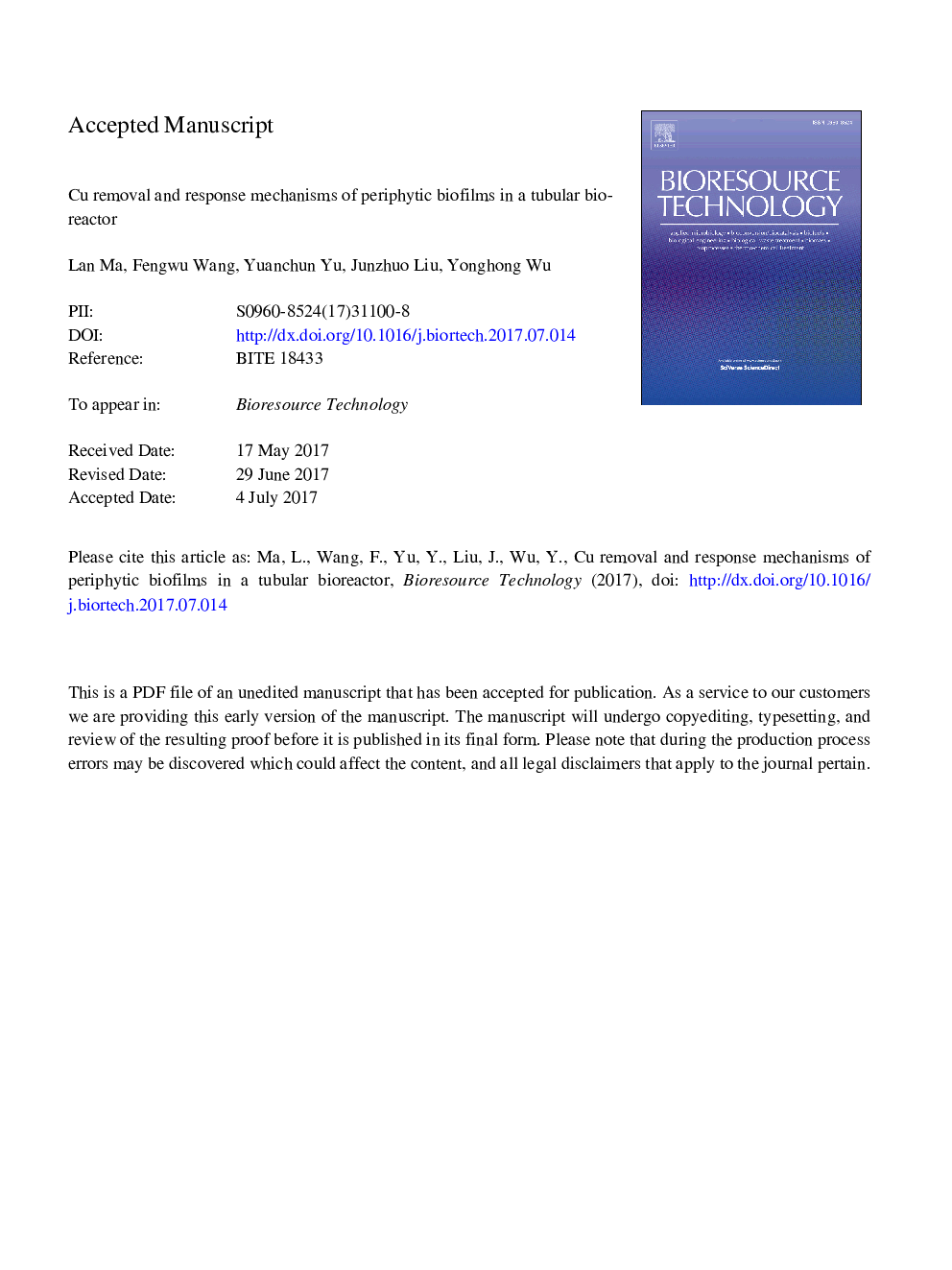| Article ID | Journal | Published Year | Pages | File Type |
|---|---|---|---|---|
| 7069040 | Bioresource Technology | 2018 | 30 Pages |
Abstract
This work studied Cu removal and response mechanisms of periphytic biofilms in a tubular bioreactor. Periphytic biofilms immobilized in a tubular bioreactor were used to remove Cu from wastewater with different Cu concentrations. Results showed that periphytic biofilms had a high removal efficiency (max. 99%) at a hydraulic retention time (HRT) of 12 h under initial Cu concentrations of 2.0 and 10.0 mg Lâ1. Periphyton quickly adapted to Cu stress by regulating the community composition. Species richness, evenness and carbon metabolic diversity of the periphytic community increased when exposed to Cu. Diatoms, green algae, and bacteria (Gammaproteobacteria and Bacteroidia) were the dominant microorganisms and responsible for Cu removal. This study indicates that periphytic biofilms are promising in Cu removal from wastewater due to their strong adaptation capacity to Cu toxicity and also provides valuable information for understanding the relationships between microbial communities and heavy metal stress.
Related Topics
Physical Sciences and Engineering
Chemical Engineering
Process Chemistry and Technology
Authors
Lan Ma, Fengwu Wang, Yuanchun Yu, Junzhuo Liu, Yonghong Wu,
